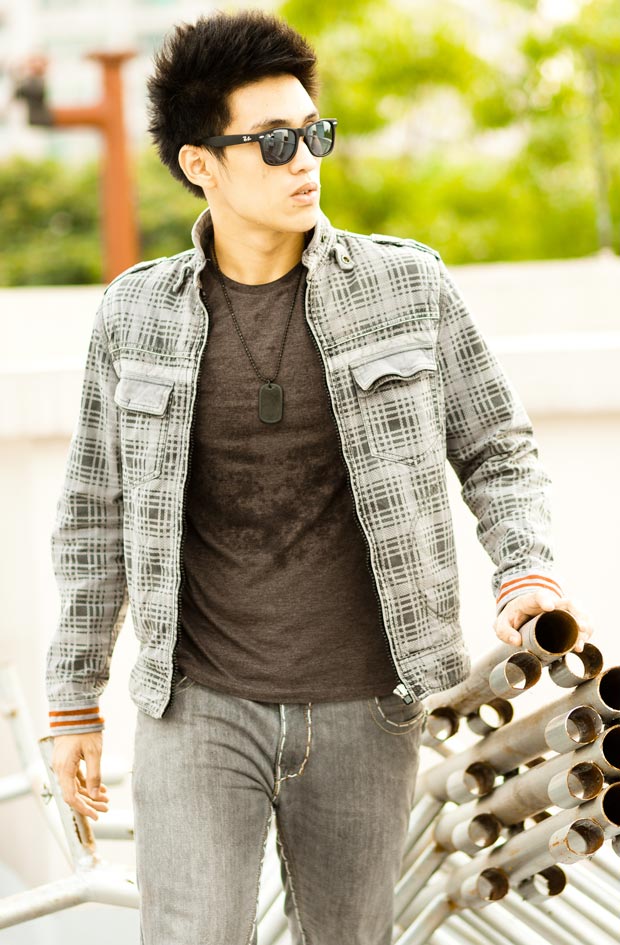The premise of Disney’s Tangled (2011) wasn’t revolutionary. A princess trapped in a tower, wishing for the day she could free herself from the confines of her prison—we’ve seen this story before.
However, what separated Tangled from other Disney flicks and earned the film a horde of screaming fans came in the form of its slick-fingered leading man: Flynn Rider. In contrast to the bland and gentlemanly Prince Charming, he was a smooth-talking bandit running from the law: a Bad Boy. To date, over 66,000 people have clicked his Facebook persona’s Like button. Buzzfeed.com has even run the article “10 Sexiest Pictures of Flynn Rider,” tearing down the notion that only pure-hearted princes make little girls (and their older sisters) happy.
Flynn is only one of Hollywood’s many Bad Boys. Gone are the days when princes rode white horses to selflessly slay evil dragons. The newer models have their own motives and may just give the proverbial middle finger to the village in need.
The perfect balance
Once upon a time, the lines between good and evil were in black and white: villains were 100% evil and heroes were 100% good. However, storytelling methods progressed, giving us more realistic and rounded characters. Good guys sinned; bad guys redeemed themselves. The lines became blurred.
Audiences found the depth they were looking for in the Bad Boy. One of the first examples was Johnny, Marlon Brando’s leather-jacketed biker rebel character in The Wild One—a role that inspired another iconic Bad Boy, James Dean.
The Bad Boy was balance between the good-looking perfection of movie characters and the misbehaving realism of everyday life, and could believably play both hero and villain—something the traditional clean-cut hero couldn’t do.
The storytelling options a Bad Boy presents, says Loyola Film Circle president Gael Gatbonton, is the main reason he’s still around today. “There’s big potential for the character since you don’t know what he’ll do next,” he says. “There’s a sense of randomness and surprise.”
To this day, the Bad Boy is a character you both loathe and adore; much of Johnny can be seen in today’s film and television rogues. Tony Stark from Iron Man partied and boozed around when he wasn’t in his Iron Man suit—not the behavior you’d expect from a superhero, but in tune with the world view of Johnny, who, when asked what he was rebelling against, famously replied “Whaddya got?”
Characters like Sawyer (Lost) and even Captain Jack Sparrow (Pirates of the Caribbean) are modern versions of the classic Bad Boy. Meanwhile, John Mayer and Russell Brand enjoy the popularity of being labelled real-life incarnations of the archetype.
“People tend to go for unconventional characters,” explains Gael. “There has to be something different with a character para bumenta.”
Weak knees and butterflies
An obvious reason for the success of the Bad Boy lies in his appeal towards the female demographic, a fact exploited by teen films worldwide.
For girls, the charm of the Bad Boy comes from the hope of changing him. Just take a look at Landon from A Walk to Remember. He was bad, he changed, and boy, did the girls love it. “He’s the type of challenge many girls go for,” says Communication major Dana Marquez. Think of him as the handsome yet arrogant classmate you can’t help but like.
And why go for a challenge? If we’re to believe media, a girl who can turn a Bad Boy good is someone very special, indeed.
Nando Pelusi of Psychology Today takes an evolutionary perspective. In the article “Neanderthink: the Appeal of the Bad Boy,” Pelusi argues that the appeal is biological. “Evolutionary psychologists define ‘good genes’ for men as high-testosterone-fueled masculinity, symmetry, height. Men … with these qualities tend to be confident and dominant, and are able to get away with roguish behavior.”
Not just for the girls
For guys, the fantasy is of a different kind. While girls see in the Bad Boy what they wish to possess, boys see who they wish to be. Sitting safely in their couches, guys can watch Don Draper (Mad Men) and Tony Stonem (Skins) get away with saying and doing things that would land real-life guys in big trouble.
Just look at Barney Stinson, for instance. In 2009, the book The Bro Code was released. A rule book that governed the life of the handsome, womanizing character from How I Met Your Mother, it was a hit with guys. Meanwhile, Community’s snarky, bare-all douche Jeff Winger has plenty of male fans who find him more intriguing than a clean-cut good guy.
Bad Boys have few inhibitions. Thus, male viewers find their edgier counterparts in media to be representations of their inner rebel—their id, so to speak—whose charm (and scriptwriters) can get any darned man out of a sticky situation.
Staying power
Whether in TV, film or literature, having a Bad Boy among the cast of characters is now the norm rather than the exception. An interesting development, however, is that today’s Bad Boys are taking longer to turn their act around—if they do so at all.
In fact, story arcs of television’s Bad Boys cycle between their good and bad sides. And since stories must escalate, each cycle becomes more extreme.
Those who watch House will recall how the doctor’s verbal lashings have gotten worse as the seasons progressed. Since the show’s beginning, his behavior has led him to be estranged from his employees, best friend and long-time romantic interest. Though things are patched up eventually, each person he hurts is closer to him than the last and forgiveness is harder to find.
Is this the next step in the evolution of the Bad Boy? Gael makes a bold prediction: “Cliché na yung may change of heart,” he asserts. “Plain is boring.”
Only time will tell what’s in store for the roguish archetype. Characters grow with their audiences, and while we may not know exactly how, as our society continues to evolve, so will the Bad Boy.








